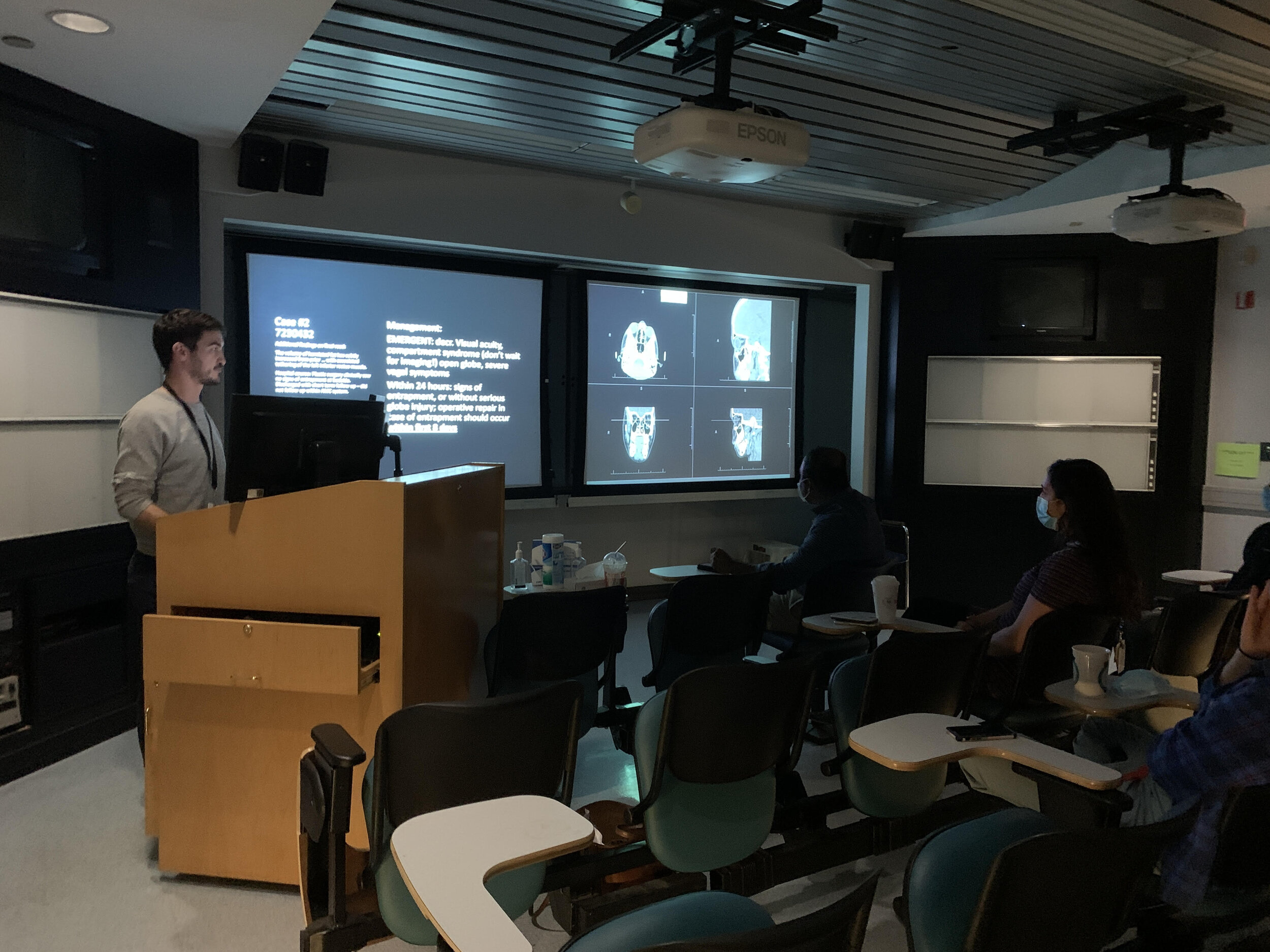
A Day In The Life
Typical Day in AMC
Radiology Residency?
A typical day for our residents may start with either an educational conference or just getting right into clinical responsibilities. Residents are busy throughout the day interpreting radiologic studies, protocoling their cases, performing procedures, interacting with patients and their families, and attending lectures throughout the day.
7:15am-8:00am Subspecialty conferences for Vascular Interventional Radiology (Wednesdays) or Musculoskeletal Imaging (Fridays)
8:00am-12pm: Clinical Work
12:15pm-1:30pm: Didactic Noon Conference
1:30pm-5pm: Clinical Work
Residents experience a gradual increase in their clinical responsibilities. Beginning in their first year, residents focus on developing the skills needed to succeed in subsequent years while on core rotations, prior to taking call. Call is an extremely important part of the resident’s learning and maturation process. Residents begin a supervised call exposure during working hours in the Emergency Department with both senior resident and attending supervision in their first year. In the latter half of first year and throughout second year, the resident graduates to higher responsibility in interpreting the studies commensurate with experience and knowledge during the evening hours. The senior residents on call are well prepared to efficiently protocol and interpret emergency and inpatient studies. They also perform/assist with pediatric on-call procedures.
Residents begin covering nightfloat in their second year. During these hours, residents continue to develop a sense of growing autonomy. A remote overnight attending radiologist is also working during this time and available to assist the resident at all times.
Finally, fourth year residents spend three months performing “mini-fellowships”. These “mini-fellowships” are typically performed in the final three months before residents graduate and start their fellowships. Some choose to use this time as an opportunity for intensive study in another radiologic subspecialty field other than their chosen subspecialty, so that they have a second area of expertise when they enter the job market. Other residents may use their “mini-fellowship” to get ahead and begin study in their subspecialty field early.


